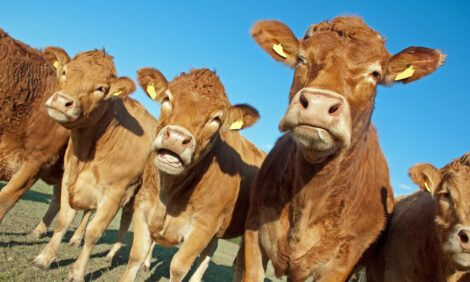



Fonterra Gets Ready to Take the Leap
NEW ZEALAND - On November 15, 2007, Fonterra, the largest company in New Zealand and the world’s fifth largest dairy company by revenue, presented six options for a fundamental capital restructuring for shareholders to consider, including a preferred option that would retain the cooperative structure while offering shares on the stock market.Under the preferred option, Fonterra would transfer all of its assets, liabilities and operations to a new company in exchange for shares. The new company would be listed on the stock exchange in 2010. The parent cooperative would retain 65% of shares, farmers would be issued 15% of shares, which they could trade, and the remaining 20% would be offered to the public.
Of all of the options considered, the preferred option reportedly best ensures that Fonterra would be able to raise capital at a competitive cost. It is estimated that $2 to 3 billion could be raised through the share offering, which would enable Fonterra to pursue its growth strategy of expanding in the fastest growing markets around the world, including China and India. In these markets, there is strong demand for fresh milk and Fonterra’s strategy is to supply this demand by building profitable businesses using locally-produced milk.
The preferred option also enables Fonterra to address redemption risk, which is fairly significant. Producers that supply Fonterra must purchase fair value shares proportional to the amount of milk supplied. These shares are fully redeemable if producers decide to cease supplying Fonterra. Because of the way the Fonterra cooperative was initially set up with a fair value shares system, Fonterra has virtually no permanent capital. The total value of all fair value shares represents the entire equity capital of Fonterra. Issuing non-redeemable, tradable shares that can be listed on the stock market would help minimize redemption risk.
During the two-year consultation process, two shareholder votes will be required. In May of 2008, shareholders will vote on whether to allow Fonterra to change to the two entity structure and to adopt a more transparent milk pricing system. The second vote, which will probably be around May 2010, will determine whether to let Fonterra list on the stock exchange and introduce external capital. Before the second vote, five conditions must be met: a competitive milk pricing mechanism, superior business performance, acceptable share market conditions, acceptable listing value for current shareholders, and legislation to support any change. In both ballots, 75% of shareholders must vote to approve the measures.
While it is premature to gauge farmer shareholder responses, many dairy farmers pondering the preferred restructuring option are concerned about how the new Fonterra company will maintain and increase the price of milk paid to producers in the future. This is a critical issue because the way the milk price is set determines how much of the new Fonterra company’s revenue, after costs, goes to milk price and into the pockets of producers, and how much goes to profit and into the pockets of investors. While dairy producers would benefit from both, the basic issue is that New Zealand dairy farmers will want the highest possible milk pay out price possible while external investors will want the highest possible dividends. A team led by Fonterra is working on a system to calculate the milk price and aims to put a proposal in front of farmers in the next couple of months. Because there’s no market price for milk in New Zealand, coming up with a suitable mechanism that is transparent, competitive and fair will be tricky. According to Fonterra, the new system will build on the approach used by Duff & Phelps, the company that calculates the fair value of Fonterra shares. Farmers will need to be convinced that this system protects their interests before they vote to approve the listing plan.
Another concern raised by Fonterra shareholders is the issue of non-farmer dominance and foreign direct investment. According to Fonterra, the listing proposal has contractual, constitutional and legislative safeguards to protect farmer control and New Zealand farmer majority ownership. On the contractual side, the parent cooperative would contract with the new Fonterra company to continue to pick up all milk produced by cooperative shareholders and would maintain a milk pricing agreement. On the constitutional side, only the cooperative would be allowed to own more than 10% of shares; 50.1% of shares must be held by New Zealand farmers; the cooperative would not be able to own less than 50.1% without a 75% shareholder vote; and the minimum cooperative stake would be 35%. The parent cooperative board would be made up of eight farmer directors and two independents. This board would have the power to appoint the new Fonterra company board, which would have six farmer and four independent directors. The boards would share the same Chairman.
On the legislative side, the support of the New Zealand Parliament will be required for changes that would require Fonterra to keep its headquarters in New Zealand; the Chairman, CEO and CFO to live in New Zealand; the share of the new Fonterra company to go no lower than 35%; and to allow only New Zealand dairy farmers to be shareholders of the new Fonterra. According to Finance Minister Michael Cullen, the Government’s primary concern is national interest, which includes ensuring that New Zealand retains majority ownership. The current Government has said it will back the legislation required for the share listing if farmers support it.
Fonterra will still be subject to the anti-monopoly provisions of the Dairy Industry Restructuring Act, including the opening up of quota markets.
According to newspaper reports, a listed Fonterra would be worth between NZ$ 8.6 (US$ 6.9) and NZ$ 10 billion (US$ 8 billion), making it the largest company on the New Zealand stock market. (The next largest company is Telecom valued at NZ$ 7.7 billion.) However, credit rating agency Standard & Poor’s has warned that the company’s credit rating – currently a very solid A+ - would be downgraded if the proposal went ahead. Likewise, the fair value share of Fonterra stocks owned by current shareholders is expected to go down by approximately 35% because the cooperative’s equity will be distributed – 15% to farmers and 20% to new investors.
Fonterra considered six options for capital restructure but, of these, only two were seriously considered. The rejected options included non-voting B shares, hybrid debt, letter stocks and a cooperative call option over processing assets. The other option considered was a partial divestment of downstream business with the cooperative having controlling interest. This option was rejected for various reasons, including the fact that it didn’t address redemption risk.
Further Reading
|
|
- Go to our previous news item on this story by clicking here. |
TheCattleSite News Desk


